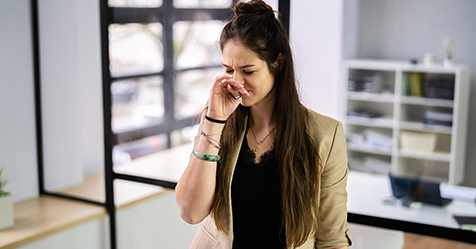Some authorities have suggested that our indoor environment can be between five and one hundred times more toxic than outdoor air.
Others are noting that we are three times more likely to have a cancerous condition from our indoor environment than outdoors.
Asthma rates connected to indoor environments have increase 600 percent over the last 25 years.
One study estimates that up to 50 percent of office workers experience aggravation of allergies and diseases because of indoor pollution.
It is estimated that we spend about 90 percent of our time in one type of indoor space or another.
And, with the desire to save energy by sealing our building, we are locking-in possible contaminates.
The National Center for Health Statistics has suggested that 17 million people (including 7 million children) have asthma.
The surprise was a footnote that 3,500 deaths have occurred as a result of severe asthmatic conditions.
A client outsourcing project included pointed specifications for plants because a vice president had severe respiratory distress.
Any Internet search is likely to expand on these findings and, if anything, tell a more compelling story about the quality of our indoor environments at work and at home.
How Plants Help
So, how do plants figure into all this research and science?
Plants have a remarkable ability to cleanse indoor air at home and in our workplace — but, not all plants are created equal.
So, with guidance from today’s science, I’d like to highlight a few plants that might be helpful to those who are affected by respiratory distress or worse.
The right plant can reduce particle levels and chemical contaminates, like benzene, toluene, formaldehyde, carbon monoxide or even arsenic, while returning oxygen to us.
How do these chemicals get into our homes and workplaces?
They might be found just about anywhere in paints, furniture, building materials, carpeting or the equipment and machines we come in contact with.
These plants appear to cleanse two kinds of indoor air pollutants: Particle pollution like dust, pollen, animal dander or people dander; and gaseous pollutants such as VOC’s from building materials, adhesives, clothing or spray bottles.
The Silent Cleaners
The Flamingo Flower — This remarkable plant is known to reduce the levels of ammonia, formaldehyde, xylene, benzene and toluene.
Asparagus Fern — This fern is a great absorber of many VOC’s, including benzene, toluene, alpha-pinene, trichloroethylene and octane.
English Ivy — This common plant lowers the contamination levels of formaldehyde, benzene, octane, toluene, alpha-pinene and trichloroethylene.
Weeping Fig — This fig has been shown to be effective for ammonia, formaldehyde, n-hexane and benzene.
Peace Lilly — The Peace Lily filters ammonia, formaldehyde, xylene, benzene, toluene, n-hexane, methyl alcohol, trichloroethylene and acetate.
Mother-in-Law Tongue — No surprise — even my mother-in-law absorbs benzene, alcohol and acetone — you didn’t hear it here.
Devil’s Ivy — This special ivy absorbs carbon monoxide, formaldehyde and benzene.
Janet Craig — What’s a nice girl like Janet doing sniffing formaldehyde, benzene, and trichloroethylene? Cleaning our environment, that’s what.
Other plants that improve our indoor air quality:
- Leopard Lilly
- Chinese Evergreen
- Ficus
- Bamboo Palms
- Gerbera Daisies
- Philodendrons.
Living Walls
In an effort to cleanse the indoors in a natural way, the idea of a living wall of plants is getting attention in a number of worker/customer-centered buildings.
One benefit from investing in living plants is a possible 20 percent reduction in dust levels, reduced “dusting” frequencies and possible labor savings.
Some have suggested that six or more plants can materially reduce contamination levels for 1,200 to 1,500 square feet of space.
Your interior decorator will love them, and they’ll also absorb sound to quite a noisy office.
Keep in mind that a healthier indoor environment also means healthier people, fewer sick days and higher productivity … not a bad ROI from attractive plants.
Given this background, I’d like to suggest a plant-centered strategy for property managers, cleaning contractors and carpet manufacturers, distributors and/or installers.
Make plants a regular part of the installation job.
Leaving a few plants is a great relationship builder, good for the planet and a competitive advantage for the informed company.



